The 2012 babies are having their one-year birthdays (July-August) so we thought it would be appropriate to wish our little baby pandas “Happy Birthday” with a couple of super cute photos – and some fun facts about baby pandas.![]()
At Birth
Can you believe that one year ago our 2012 babies were the size of a stick of butter? Yep, that’s right, at birth baby pandas weigh only 90 to 130g. Outside of marsupials, pandas have the biggest weight difference discrepancy between the mother and newborn infant (i.e. they’re the smallest infant given the size of their mothers). Baby pandas are a mere 1/800th the size of their moms!
Last year at this time our babies didn’t look anything like the instantly recognizable and iconic species we’re used to seeing. In fact, baby pandas look more like a pink, blind, hairless baby rat (albeit a larger version) then the cute, cuddly, black and white babies we see pictured here. They start to show the beginnings of the white and black coloring at around 10-12 days of age but only at 3 months are they completely morphed into the quintessential babies that we know and love. Pandas rely heavily on their sense of smell throughout life so it is no surprise that their sense of smell has started to develop by 18 days.
Baby pandas are born with their eyes closed and are entirely reliant on their mothers for care. The mother panda cradles the baby in her arms and holds it constantly on her tummy. She supplies the baby with high-fat milk that’s loaded with antibodies that help the baby panda’s developing immune system. Babies will nurse anywhere form 6 to 12 times per day in their first two weeks of life. The mother doesn’t leave the baby even once during this time. It’s highly important for her to regulate the baby’s temperature, defections (cubs will die if the mother doesn’t stimulate the baby to pass stool), and feeding. The mother will fast and not go foraging for bamboo until the cub is at least 15 days old. After 3-4 weeks, the baby can better regulate its body temperature and does not require constant contact with its mother to stay warm.
1 – 2 months:
Because pandas are born so underdeveloped, baby giant pandas have one of the largest growth curves of any mammal. Their sense of smell becomes even more acute in the 1-2 month period and baby pandas are even able to distinguish between their keeper’s scent and a stranger’s scent by 1.5 months old even though they’re blind! At anywhere from 1.5 to 2 months old (last September and October for our 2012 cohort) our babies were starting to open their eyes to start investigating the wonderful world around them and at around two months old started taking their first tentative steps. At this age babies will still be attended by their moms and won’t go outside the den as they’re still too vulnerable. They still nurse 3 to 4 times per day. Natural dens are close to water, have small entrances and roomy interiors so that the temperature in the den stays constant and warm.
3-4 months:
By 4 months old the cubs are now the rolly-polly animals we’ve all grown to love and adore. They can run several steps (very clumsily), climb on their mother’s back to play, and the very capricious youngsters may even join their mothers in the outdoor yard trying their best to figure out what mom finds so interesting about bamboo by fiddling with and exploring the leaves themselves. It helps that their baby teeth start to come in during this time period.
5 -12 months:
Significant developmental milestones are reached between 5 months and 1 year of age. During this time, baby panda bears imitate much of their mothers’ behavior, include walking, climbing trees and eating bamboo. Anywhere from 5-7 months after birth (January – March for the 2012 babies), cubs start to climb trees. This is a super important skill for their wild counterparts as a baby panda’s main mode of defense is climbing to the tops of trees. In the wild cubs spend most of their time up in trees. Mothers typically leave their babies for 4-8 hours but have been known to leave them for up to 2 days! I’ve personally seen 6 month old cubs in captive enclosures stay up in trees for as many as 3 days without coming down for food when Hua Mei’s baby climbed up last year (though she eventually came down to eat).
At this age baby pandas are clumsy! They often trip, fall and roll over while exploring their surroundings. I’ve often visited the panda kindergarten when a baby falls from a particularly high tree or climbing structure to hear the crowd gasp in horror, only to laugh seconds later when the cub bounds to it’s feet and scampers off. The San Diego Zoo just blogged that Xiao Liwu fell 6 meters (20 feet) from a tree in his enclosure. Young pandas seem to be made to “bounce” at this age and often get up from these falls without a single complaint. The mother’s seem to be fine with these falls as well showing no signs of distress for their babies. Baby pandas also have an adorable little reflex where they curl up into a ball if you scratch the top of their tails which then allows you to roll the baby around the enclosure!
At 6 months old baby pandas have 26-28 teeth and will start to eat solid food. Most cubs start to try eating bamboo at around 10-12 months. Up to this point the baby will still nurse 1-2 times per day. At around one year of age the adult teeth start to erupt and the yearling will weigh 22-27 kilograms.
Becoming an adult:
Baby pandas stay with their mothers until 1.5 to 2 years of age. During this time period, they continue to learn important survival and social skills from their mothers. Scientists think that baby pandas learn to breed by watching their mother’s breed at around 1.5 years during the mating season (February – April). By 18 months most baby pandas have been entirely weaned from their mothers.
At about 2.5 years of age pandas are nearly their adult size (2-3 feet tall at the shoulder and 4-6 feet long) and weight (113kg for males and 100kg for females) and start showing behaviors of adult pandas (aggressive towards conspecifics and territorial). Before this it is actually possible to enter cages with the juveniles and house the juveniles communally. They don’t go through puberty (become sexually mature) until about age 5-7 (though some females have been recorded to be as young as 4 years old when they go into estrus).
So let’s all sing a round of “Happy Birthday” for the yearlings and give a big welcome to the newbies who have been coming into the world in the last couple of months! I hope you’ve enjoyed learning about the babies!
Do you have any questions that you want answered about baby pandas?
– Meg

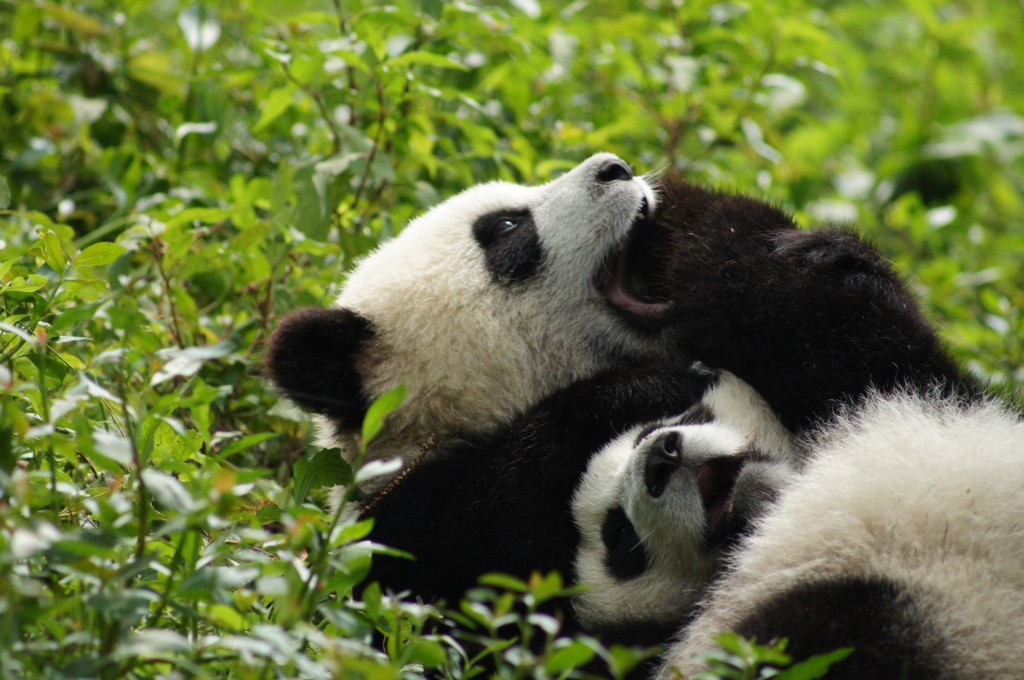
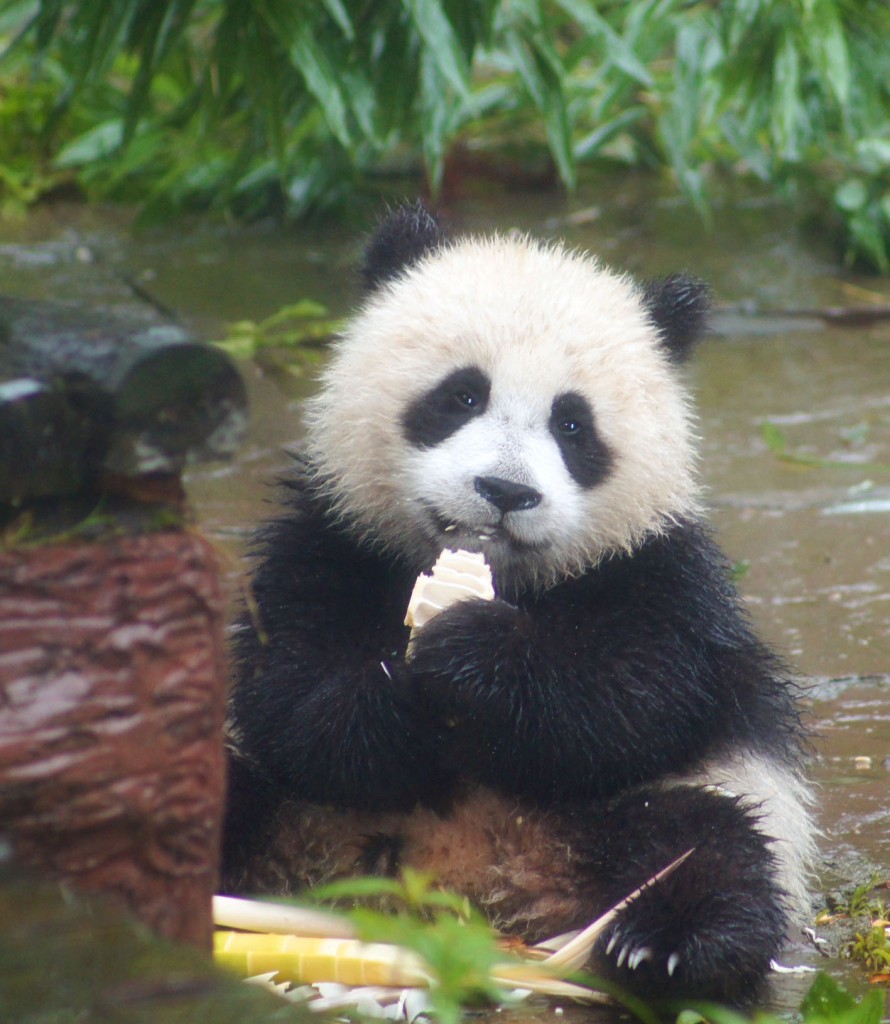
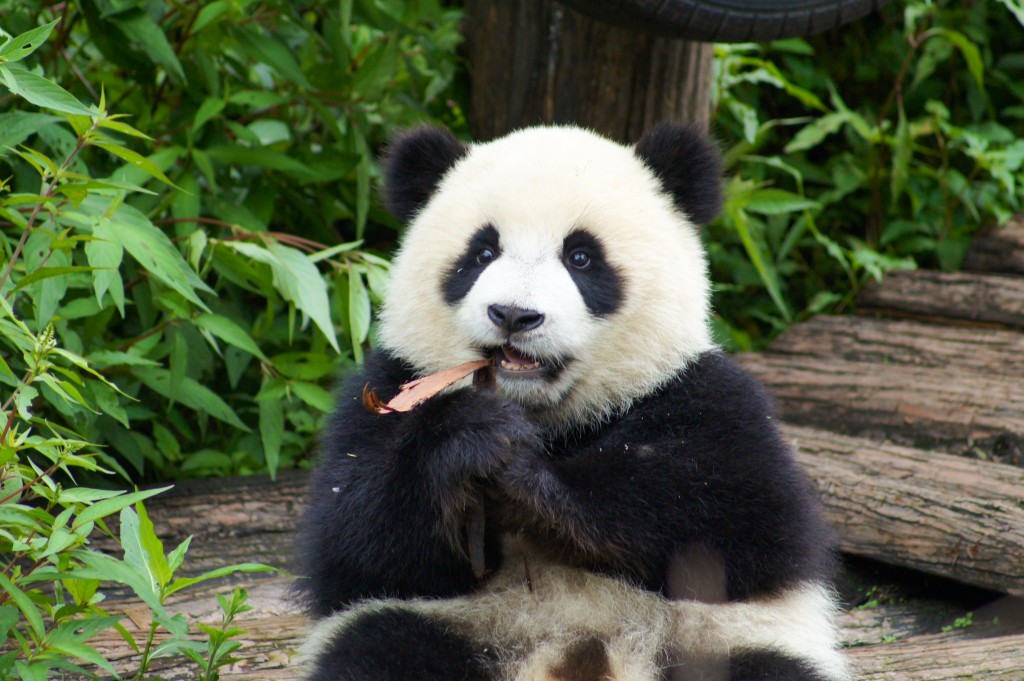
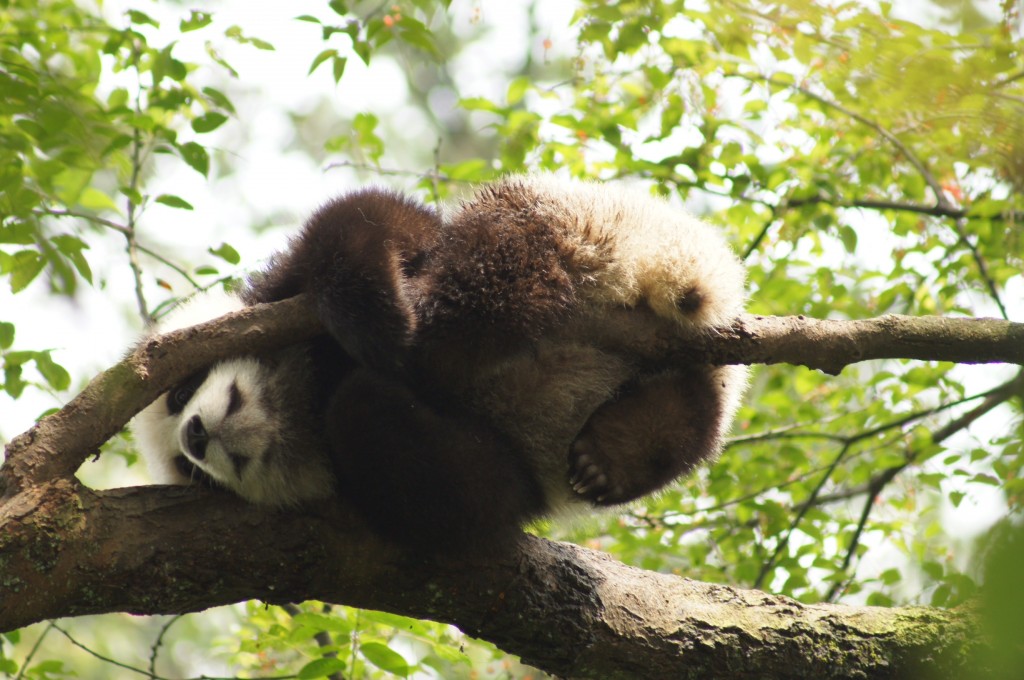
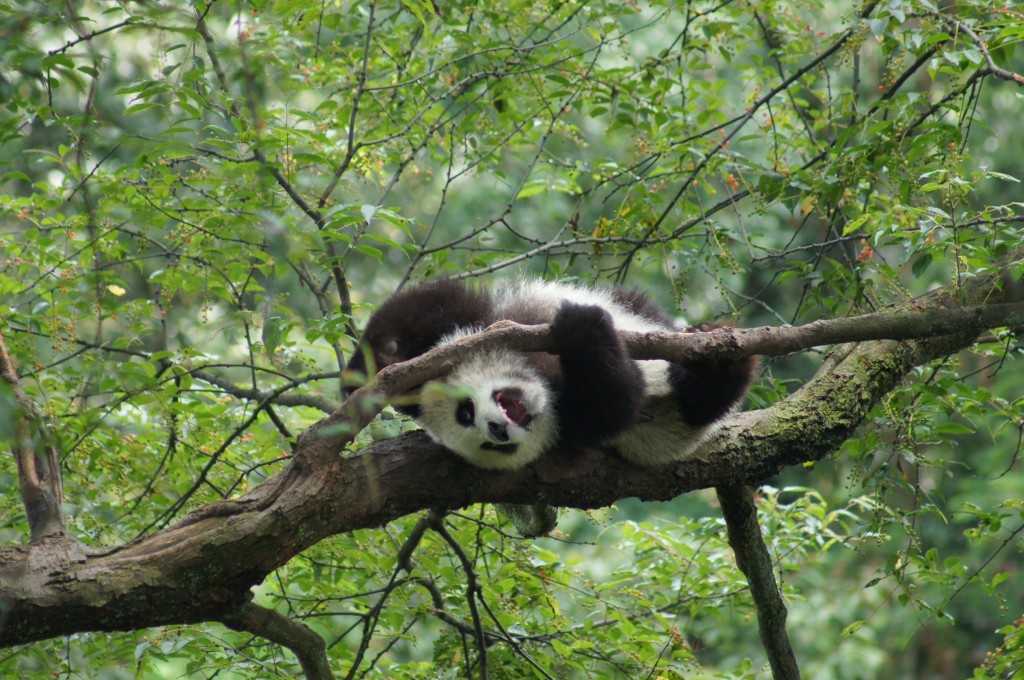
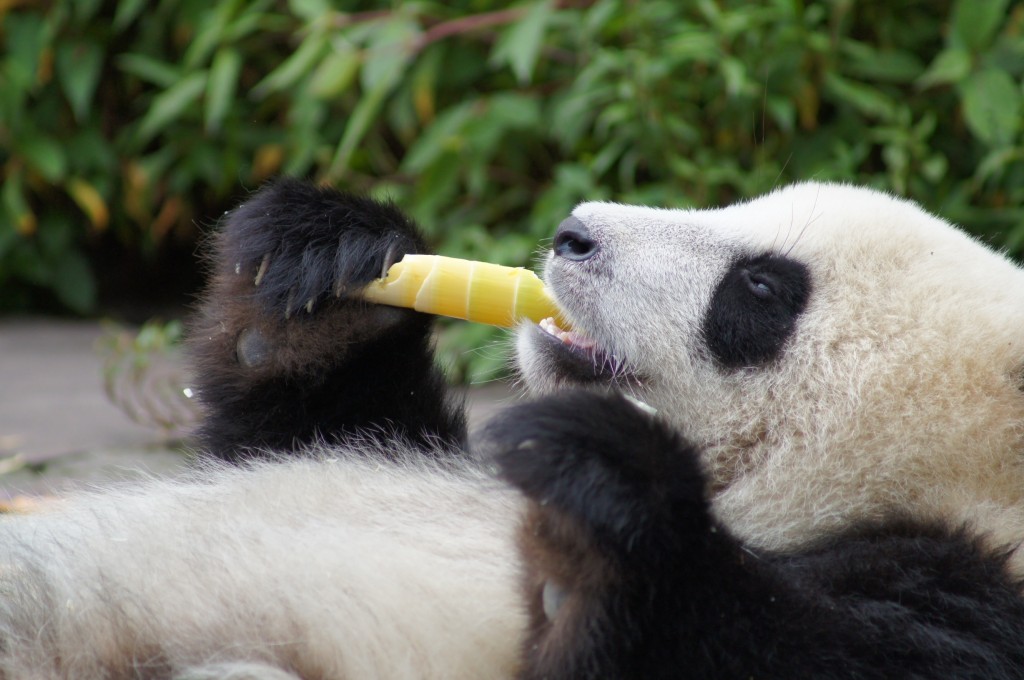
I’ve never seen that part about scratching the tops of their tails and rolling them around. Are there pictures?
Unfortunately, I haven’t gotten one (usually I’m having too much time playing with them!) but I promise to try harder next year.
Guess that’s a pretty good excuse…jealous!
My daughters are going to go nuts over this. Thank you so much for the detailed information about young pandas – this is a homeschooling mom’s dream! Peace be with you, and regards to Nate — Kelly
I’m so happy to help! Thanks for reading and let us know if your daughters have any more questions about pandas – we’d LOVE to answer them on our blog.
I wonder how Ying Hua’s son, who was born in September 2012, is doing there. I think he is the youngest of the 2012 cubbies at the BFX kindergarten.
He would be youngest with the September birthday! I’d heard he moved to BFX but just asked my intern to check up on him. I’ll let you know what she says!